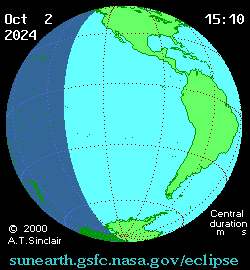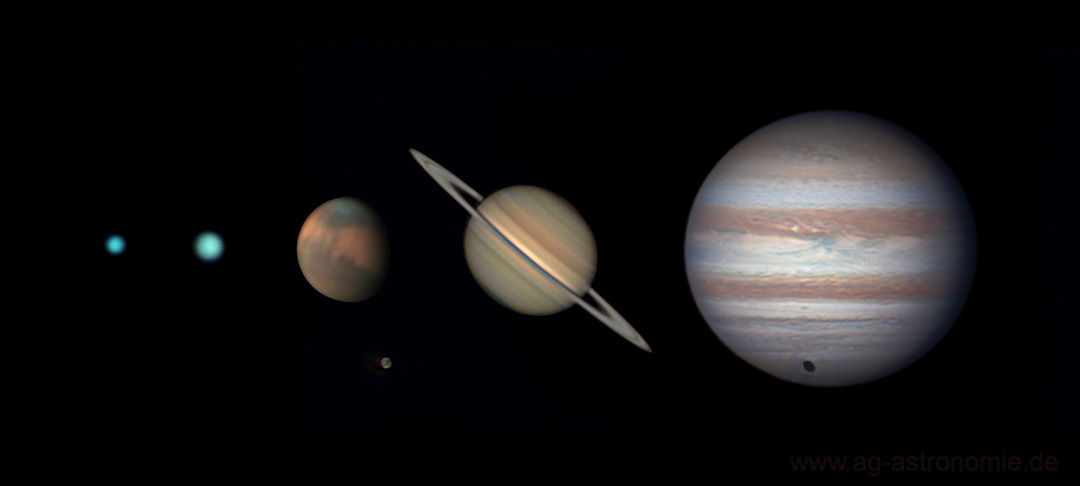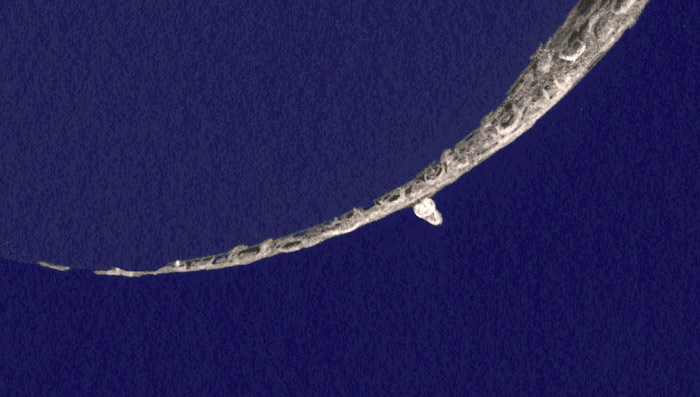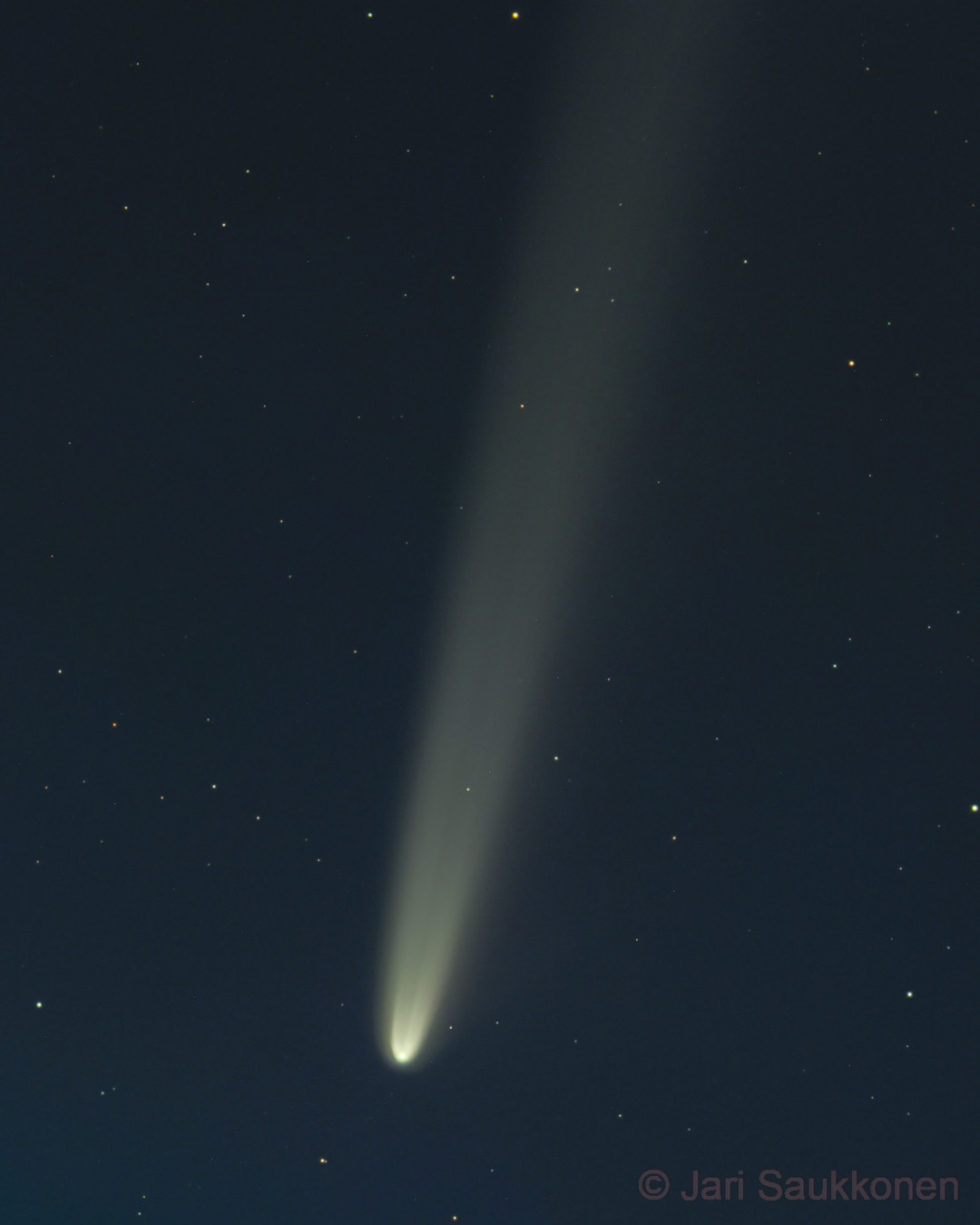2024: Year-End Astronomical Events
The clock is winding down on 2024 with just three months left. But our clockwork universe has many astronomical events in store for us stargazers. This includes and eclipse, Supermoons, conjunctions, occultations, and a possible daylight comet!

The Moon
Supermoons Rule The Fall Season
Due to the elliptical shape of the lunar orbit, the distance from the Earth to the Moon can vary by 50,200 km (31,200 mi). The term Supermoon describes a full Moon that occurs near the Moon’s closest approach to Earth (perigee) while Micromoon describes a full Moon near the point furthest from the Earth (apogee). A Supermoon can be 14% bigger than a Micromoon. The difference in size is very obvious in photographic comparisons.
There is no agreed-upon definition of how close and far a Moon needs to be to qualify for any of these designations, so sources may differ on the number of these Moons in a year. This year, every month in the Fall season has a Supermoon! From our reckoning, these are the dates of the remaining Supermoons of the year with the date of perigee in parenthesis:
October 17 (October 16), November 15 (November 14), and December 15 (December 12).

The Sun
Solar Eclipses
This is the third year in a row that a solar eclipse in April is followed by another one six months later in October. That three year cycle won’t repeat again until the year 2041. The upcoming October 2nd, event will be an Annular eclipse (from the word annulus or ring) that happens when the Moon appears inside the disk of the Sun, but is too small to cover the Sun completely. This allows a ring of light from the Sun to shine around the lunar disk. Viewers are cautioned to keep eclipse glasses on for all phases of this event. There will be no totality or solar corona to observe.
Starting in the Northern Pacific Ocean, the path of totality will cross the equator and head south and cross the tip of South America into southern Chile and Argentina before ending off the coast in the chilly South Atlantic waters. The duration of the ring of fire will be a long 7′ 25″. See the TimeAndDate.com site for what the eclipse will look like and the live stream on YouTube.
The Planets
Oppositions
Planets in opposition are in the sky opposite the Sun when viewed from Earth. They rise at sunset and are in the sky all night. Around opposition, the planets are closest to Earth and at their brightest. This makes opposition an opportune time to view and image a planet — especially the faint “ice giants” Uranus and Neptune. Note that only planets with orbits further away from the Sun than Earth’s orbit can be in opposition.
Fall is opposition season with all the giant planets sparkling in the the sky at night.
- Uranus: November 17
- Jupiter: December 7

Planetary Conjunctions and Occultations
Moving along the ecliptic path, sometimes planets cozy up to each other or with the Moon. These are planetary conjunctions. For the remainder of the year, the best planetary conjunctions easily visible well above horizon obstructions for mid-northern latitude observers involves the Moon and Saturn. Events listed are for these objects within ½° (30′) of each other. In some parts of the world, the these conjunctions will be closer or even become lunar occultations where the object slides behind the Moon.


- October 14 evening: Conjunction of Moon and Saturn with the Moon 6’45” north of Saturn. They will be visible at sundown and set around 3 A.M. the next day. (Occultation visible in south-east Africa and south central Asia.)
- November 10 evening: Conjunction of Moon and Saturn with the Moon 5’18” north of Saturn. They will be visible at sundown and set around midnight. (Occultation visible in Central America, Caribbean, and north-west South America.)
- December 8 evening: Conjunction of Moon and Saturn with the Moon 18′ north of Saturn. They will be visible at sundown near their highest point in the sky and will set after 10 P.M. (Occultation visible in Indonesia.)
Comets of Interest
Comet C/2023 A3 Tsuchinshan–ATLAS, swung through perihelion on 27 September 2024 and will make the closest approach to Earth on October 12th. This comet is breaking expectations and may be bright enough to see in daylight if you are careful! Being close to the Sun in daylight, it would be best to setup in the shade of a building to attempt the observation and view the comet with a camera or smartphone on the eyepiece. But comet brightness is hard to predict.
Currently visible in both hemispheres (highest in the sky in the tropics), best viewing in twilight is before sunrise for the first few days of October after which it will then become an evening object in October skies. Allow TheSkyLive.com site to know your location and it will produce a map showing the comet location for any time and date.
This comet is from the Oort cloud: a “cloud” composed of billions of comets at the outer-edge of our solar system. We know this from calculating it’s orbit and finding it reaches 1.4-light years or from the Sun.
Did you observe, sketch, or image with Tele Vue gear? We’ll like your social media post on that if you tag it #televue and the gear used. Example:
#televue #tv85 #ethos #C2023A3
Do you want your Tele Vue images re-posted on Tele Vue Optics’ Social Media accounts? Use this hashtag for consideration:
#RPTVO




